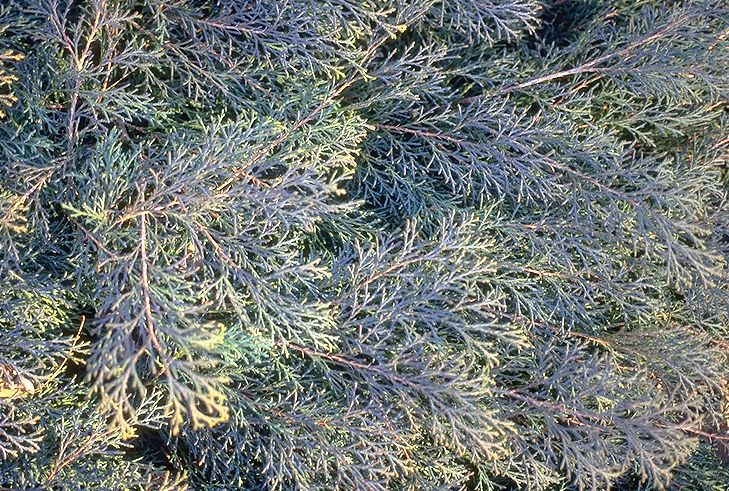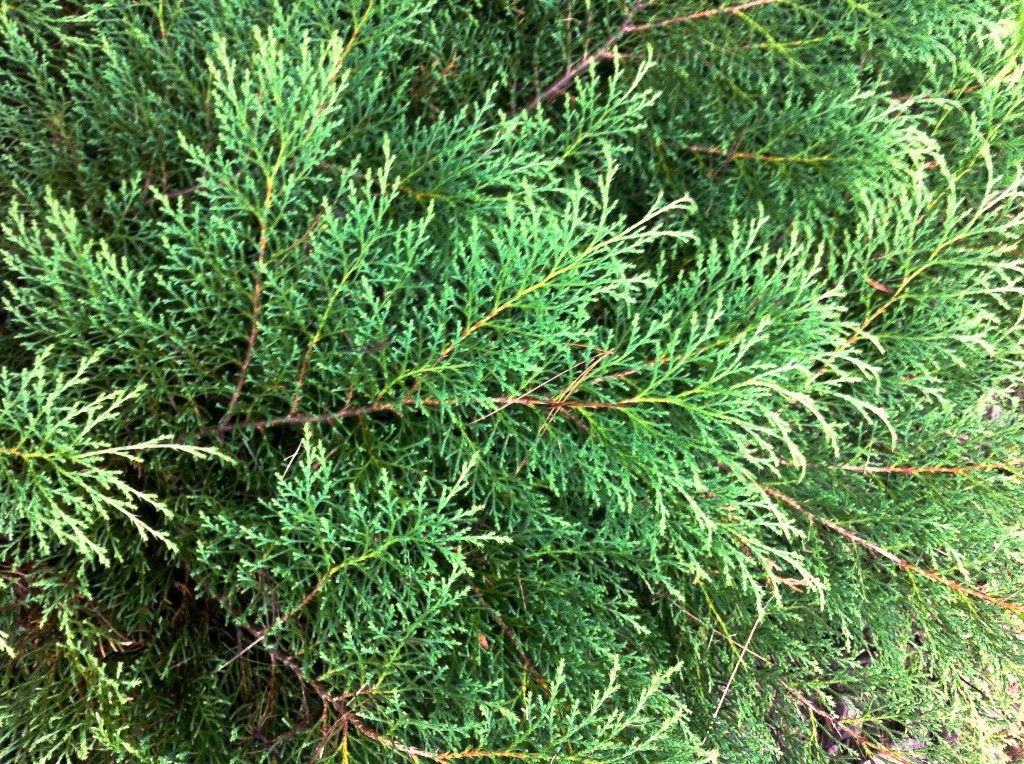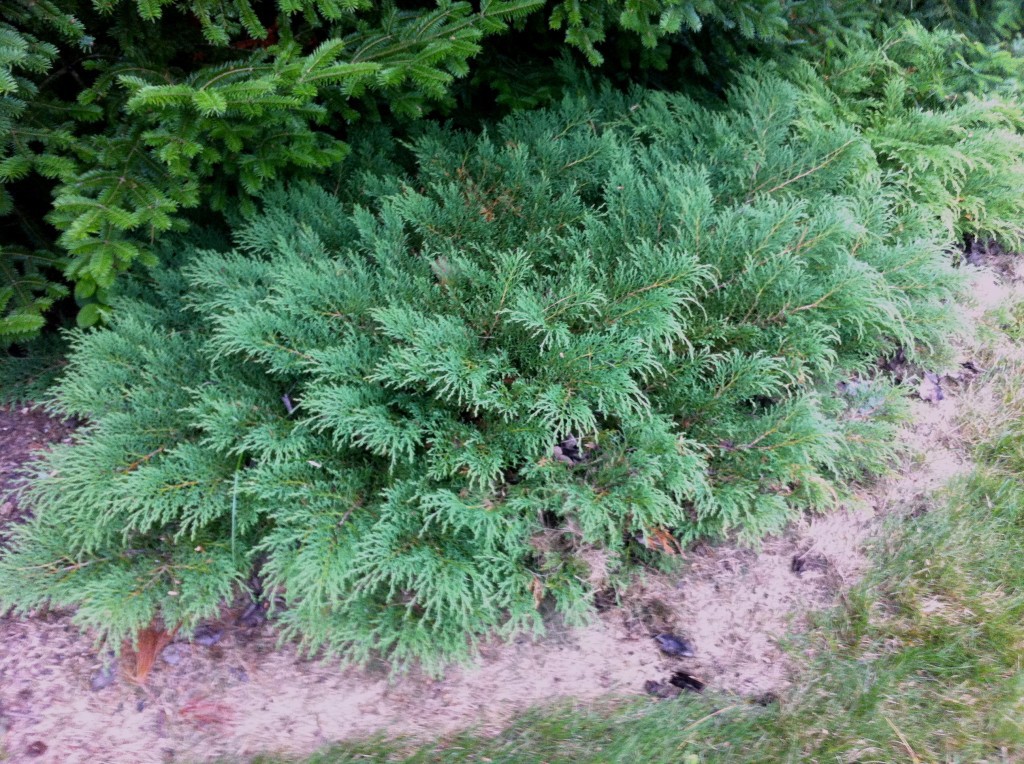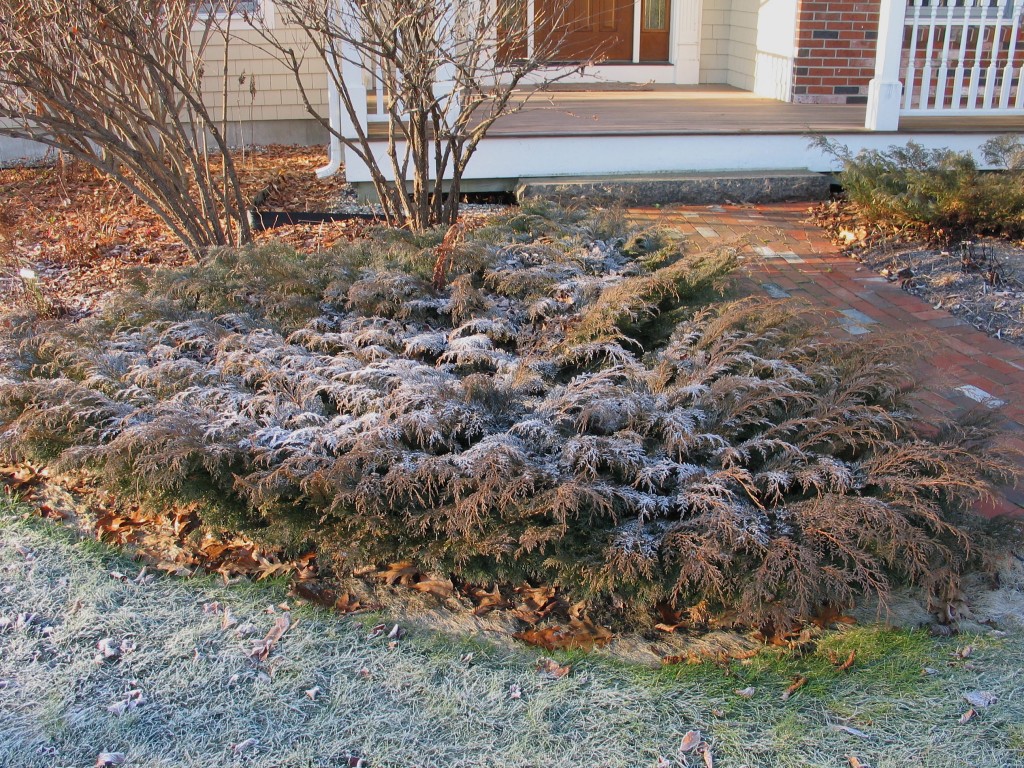Variously called Russian arborvitae, Russian cypress and Siberian cypress, in recent years this plant has become a go-to evergreen groundcover in shady spots (but not full shade) because its soft, feathery foliage makes it a good substitute for the coarser junipers and it is more shade tolerant. With its arborvitae-like, bright green spring foliage, dark green summer foliage, and bronzed fall and winter foliage it does well in moist, fertile soil but will also tolerate dry, rocky conditions. Needs good drainage as it is subject to root rot. Can spread to 10' wide; generally 12" or less in height.






